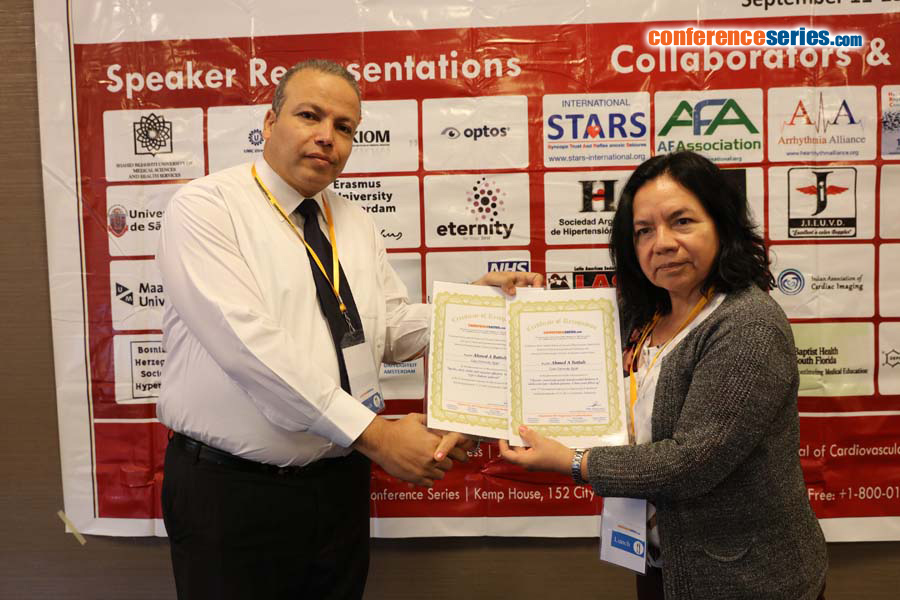2nd International Conference on Non-invasive Cardiac Imaging, Nuclear Cardiology & Echocardiography
Amsterdam, Netherlands

Ahmed A. Battah
Cairo University, Egypt
Title: Glycemic control and carotid intimal medial thickness in adolescents type 1 diabetic patients : a three years follow up
Biography
Biography: Ahmed A. Battah
Abstract
Objective: To assess carotid intimal medial thickness(cIMT) in type 1 diabetic patients who were followed up for 3 years to shed further light on relationship of glycemic control and cIMT.
Patients and methods: It is a prospective cohort observational study, included 40 type 1 diabetic patients and 30 age and sex matched healthy volunteer. Blood sample was taken for analysis of glycosylated hemoglobin (HbA1), lipid profile and urine sample was taken for analysis of albumin/ creatinine ratio. cIMT via ultrasound was also done. Three years later, patients were subjected to the original laboratory investigation and cIMT. t- test and MacNemar test was used for analysis of data.
Results : cIMT were significantly higher in diabetics in the original study. Three years later, patients had significant increase in waist/ hip ratio, HbA1, albumin/ creatinine ratio and cIMT. cIMT regressed in 3 patients, remained stationary in 18 patients (2 patients remain normal and 16 had increased cIMT) and the remaining 19 patients had progressed cIMT. Patients with progressed cIMT had significantly higher waist/ hip ratio, HbA1and albumin/ creatinine ratio than patients with stationary cIMT.
Conclusion: Adolescent type 1 diabetic patients had increased cIMT. Progression in cIMT is associated with obesity, poor glycemic control and nephropathy. We recommend good glycemic control and frequent follow up of diabetic patients for early detection of diabetic complication.




